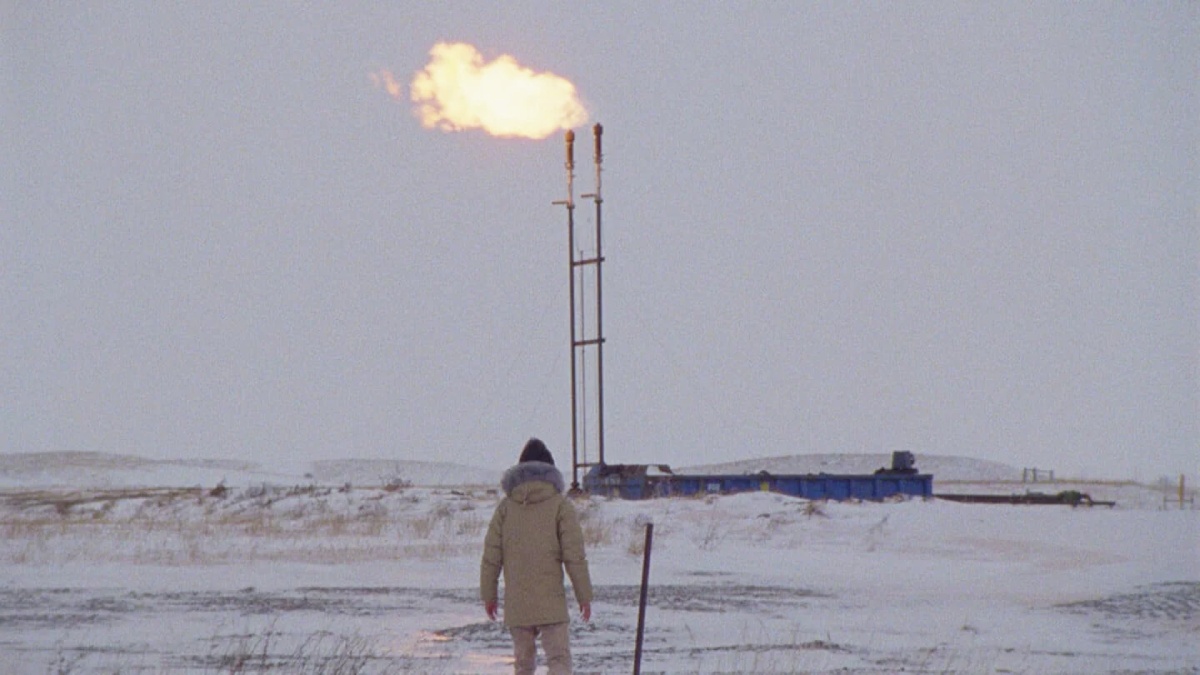As the climate crisis worsens, the need for urgent action grows exponentially. Ignoring a problem doesn’t make it go away, and this one threatens total global collapse. Unfortunately, the allure of money, power, and the empty promises of the free market have incentivized popular culture to ridicule and pathologize those who care deeply about the planet’s health. “Lisa Simpson” has become a shorthand for the overeducated do-nothing youth archetype created by conservatives and satirized in the media. Somehow, certain media tricks people into believing that caring about the environment is only for the bourgeois, those too insulated to be in touch with the needs of the “average” American.
READ MORE: TIFF 2022: 16 Must-See Films To See At The Toronto Film Festival
Daniel Goldhaber’s sophomore feature “How To Blow Up a Pipeline” refutes this myth, depicting climate activism as a natural, logical response to the catastrophic state of the world. The film–co-written by Goldhaber, executive producer Jordan Sjol, and star Ariela Barer–adapts Andreas Malm’s nonfiction book of the same name, which serves as a call to action for climate justice. In his book, Malm argues that violence and property damage is necessary for revolution and that history has been sanitized to obscure the truth about direct action. The film lifts information and arguments from Malm to tell a straightforward story about a diverse group of young people who work together to disrupt oil infrastructure and make a radical statement about America’s dependence on fossil fuels. But despite the loftiness of their goals, the operation itself is as bare bones as it gets. They gather in a rundown house in Texas with only food, clothes, and the ingredients for making bombs. Everyone goes off the grid, establishes alibis, and only communicates with flip phones. It’s a classic heist setup: If something goes wrong, they’re on their own.
Led by Xochiti (Ariela Barer), the aspiring eco-terrorists (and I use that term as a compliment) all have their own reasons for taking such extreme action. Shawn (Marcus Scribner) wants to actually help the people he’s been filming for a shallow environmental documentary. Michael (Forrest Goodluck) and Dwayne (Jake Weary) are trying to defend the land they grew up on. But Theo (Sasha Lane) has by far the most compelling story. After receiving some troubling medical news, this is her final act of rebellion, and her girlfriend Alisha (Jayme Lawson) is right there by her side. The remaining members of the group, Logan (Lukas Gage) and Rowan (Kristine Froseth), have murkier intentions, which is a source of a good deal of suspense and uncertainty.
Goldhaber masterfully uses flashbacks to establish this cast of rebels, each one focusing on a specific character or two, revealing just enough about their personal stake in these issues. Editor Daniel Garber makes expert cuts, weaving in the past to create tension in the present. The film’s score–reminiscent of the pulsing ’80s synth sound resurrected by recent films like “Drive” and “Mandy“–transports us to a time when thrillers were more carefully constructed. The sound is constant and percussive like a pulse and keeps the film’s momentum going. Due to its low budget, Goldhaber and his team forgo CGI to create impressive practical effects that lend a bare-bones realism to the narrative. And I would be remiss not to mention the costuming, which, much like the flashbacks, gives its own form of backstory for each character. This does not feel like a film full of flashy young stars cosplaying unconvincingly as activists. Everything about their jeans, bulky coats, and plain sweaters reinforces the averageness of the characters, coupled with the casual diversity of the casting.
READ MORE: Fall 2022 Preview: 60+ Must-See Films To Watch
Acting almost as a counterpoint to the dour pessimism of Kelly Reichardt’s “Night Moves,” “How to Blow Up A Pipeline” takes a more optimistic approach to the climate movement. And yet, Goldhaber doesn’t shy away from interrogating his characters’ motives at every turn, maintaining the tenseness of the narrative. In a cinematic landscape that so often glorifies the military and police, “How to Blow Up a Pipeline” puts a spotlight on true heroism, the kind that works against the oppressive arm of the state. In America, if the government supports your actions, you’re probably doing the wrong thing; but what’s legal is considered moral, and American cinema often takes that as unquestioned truth. Truly radical art interrogates the rigid parameters of government in search of more human truth, one that considers the possibility that people in power have very little understanding of what is good for the populace. Goldhaber approaches a statement like that here. [B+]
Follow along with all our coverage of the 2022 Toronto International Film Festival.





